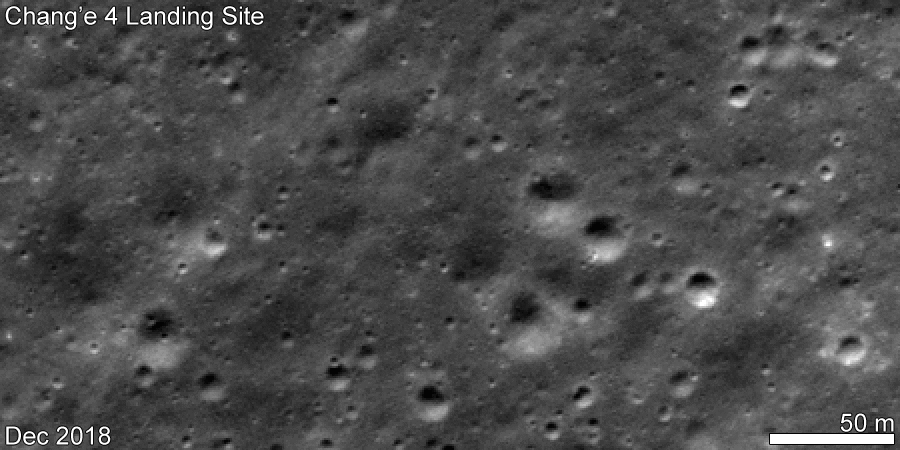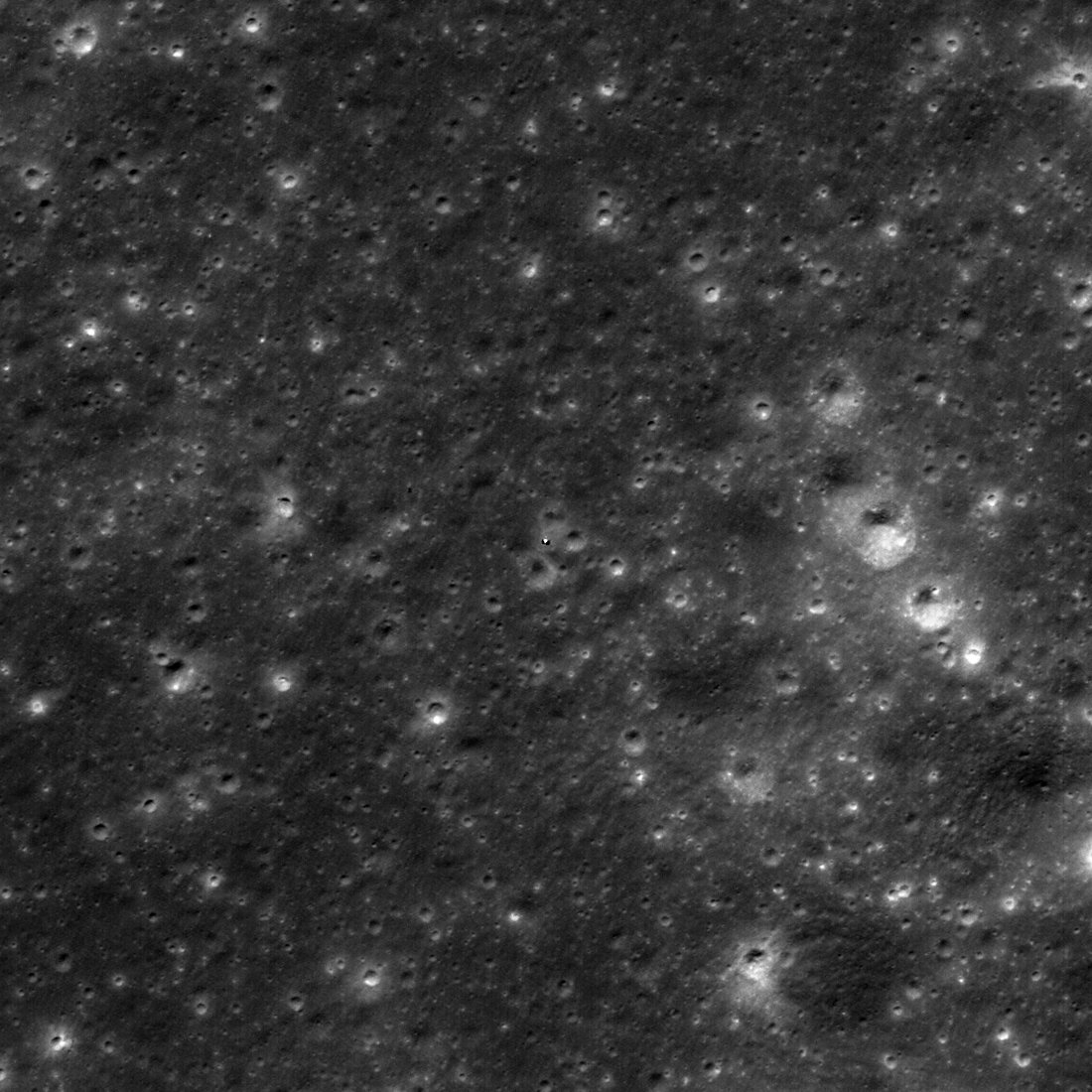
Once a month, LRO passes over the Chang'e 4 landing site, allowing LROC to capture a new image. LROC has now imaged the site five times (since the landing) and observed Yutu-2 to have traveled a total of 186 meters (distance measured using the rover tracks). If you squint, portions of the rover tracks are visible as a dark path in the images from April, May, and possibly June. Progress over the past two months has been slower than in previous months; perhaps the rover has found some interesting geology and is lingering to collect a comprehensive set of measurements!

| Period | Distance (m) | Cumulative Distance (m) |
| Landing to 30 Jan. | 54 | 54 |
| 30 Jan. to 28 Feb. | 63 | 117 |
| 28 Feb. to 10 Apr. | 53 | 170 |
| 10 Apr. to 7 May | 6 | 176 |
| 7 May to 3 June | 10 | 186 |
During the latest pass (3 June 2019), the Sun was 45° above the horizon, close to its maximum elevation for this latitude (45° S). LRO pitched 29° back toward the south, so that Sun was nearly directly behind the spacecraft (16° phase angle). From this vantage point, looking down and out toward the lander with the Sun at its back, LROC caught a strong glint off of the Chang'e 4 solar panels. Reflectance differences among surface materials are also usually more apparent from these viewing conditions, thus the goal of collecting this image was to document albedo differences that were caused by the Chang'e 4 engine plume as it interacted with the surface during landing.

Under similar lighting conditions, the Chang'e 3 plume effects were quite apparent: the area around the lander was about 10% more reflective than its surroundings. However, though there does appear to be a small region of elevated reflectance around the lander, the "blast zone" at the Chang'e 4 site is more difficult to discern. This may be due in part to the lack of a comparable (Sun at our back) image from before the landing, or it may result from the fact that the landing occurred on a small region of high topography between three impact craters, making reflectance differences harder to see. It could also be that the effects of the engine plume on the reflectance of the surface were smaller due to the properties of the landing site itself, where a thin dusting of highland materials from Finsen crater covers the mare surface.
LROC will keep imaging the site as the Sun angles and look angles vary, to better understand the reflectance of this region, and to watch Yutu-2 keep on roving and exploring!
Related Featured Images
Topographic Map of the Chang'e 4 Site
Chang'e 4 Rover Comes Into View
Published by Mark Robinson on 27 June 2019